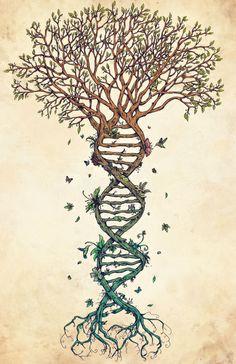Genetically Modified Organisms
Dec 11,2016
Over the past few decades, the use of genetically modified organisms has been questionable due to emerging research that contradicts mainstream acceptance. Many scientific researchers have found new evidence that contradicts the mainstream belief that genetically modified organisms are safe and efficient for human consumption. Genetic researchers, in particular, have found scientific evidence that suggests consuming genetically modified foods is detrimental to the human body over the course of prolonged consumption. Large corporations whom advocate genetically modified foods, such as Monsanto, continue to insist upon genetically modified foods as being a safe and necessary part of today’s global food industry. Just as one would never put gasoline in a diesel engine, one would not want to put food (fuel) inside of their body (engine) if it were not compatible with their DNA. Sources from both inside and outside of the US argue the safety and long term effects of utilizing genetically modified foods for human consumption. In this debate, genetically modified foods are found to have a negative impact on health, industry, and environment as a whole. Those whom advocate genetically modified organisms are found to give inconclusive evidence as a defense for their position.
Monsanto Corporation, one of the world leaders in genetically modified foods, argues that the process of genetic modification is nothing new. “Chances are, almost everything you’ve eaten in your entire life was genetically modified. The same was true for your parents…and your grandparents. For more than 10,000 years, mankind has selectively bred plants and animals ”(Monsanto). However, scientist Vicki Mattern argues that this in not entirely true by clarifying the difference between selective breeding and genetic modification. While our ancestors have been selectively breeding plants for tens of thousands of years, selective plant breeding is low tech, does not require a lab, and such genetic crosses of similar plant species can even occur in nature (Mattern). Mattern differentiates between genetic cross breeding and genetic modification by evaluating the processes that must be undertaken to achieve such results. The cross breeding undertaken by our ancestors involved taking specimens from similar plant varieties and cross breeding them to create a hardier hybrid. This was accomplished by using traditional breeding methods involving pollination. Genetic modification, on the other hand, involves the splitting of molecular DNA in a laboratory. Often times when scientists do this, they are crossing different biological kingdoms, such as bacteria and plant kingdoms (Mattern). Interestingly enough, the corporation Monsanto continues to validate the practice of genetic modification by using our ancestors’ practices as an excuse (Monsanto). This makes for an inconclusive argument because Monsanto fails to relay complete information. The corporation fails to elaborate on the improvements made on plant breeding processes during the progressive generations of plant breeding. Monsanto continues to advocate the practice of genetic modification, but nowhere on the corporation’s website does Monsanto elucidate on the leap in scientific technology required to achieve such genetic feats as weather resistance, pest resistance, and even miniaturization of traditional breeds. The lack in clarification from Monsanto appears to be misleading when incomplete background information on the subject is present.
Advocates of environmental protection continue to debate the safety and long term goals to be reached through the utilization of genetically modified organisms. The EPA warns us on their own public access records that genetically modified breeds that have been out on the market for as long as two decades are in fact listed as pesticides themselves (EPA). Mattern finds that this is possible through genetic splicing, which occurs during genetic modification. She continues to argue that the process of genetic modification is faulty, and therefore not an entirely safe practice. She elaborates on how and why by elucidating the processes that must be undertaken to achieve such results. Take the goal of pest resistance for example: the DNA of a bacteria that is malignant to the identified pest is spliced and joined with the host plant DNA, so when the rouge pest tries to attack the plant the bacteria that kills said pest is already a part of every cell of the plant-the pest does not stand a chance. What is even worse is sometimes mutations occur within the spliced DNA from different biological kingdoms, causing unexpected and undesired outcomes (Mattern). Both Mattern and the EPA are aware of the faults present in genetic modification, but the EPA fails to do anything more than vaguely mention that genetically modified breeds are in fact poisonous through a scientific data record. The depth of information relayed from both sources may indicate the sincerity with which these sources hold themselves accountable to.
The consequences these unintended mutations may impose are analyzed by researchers of food safety. The European Food Safety Authority uses cauliflower as an example to elaborate on how mutations can occur after every breeding cycle. The DNA of cauliflower and a virus have been spliced and joined to create a pest resistant form of cauliflower. Every time the plant reproduces, the genetic coding of the plant and the genetic coding of the implemented virus overlap sequences, thus causing proteins vital to cell function to malfunction. These effected proteins determine toxicity of the plant along with possible allergic reactions people may have when they come into contact with the plant (EFSA). Once again the FDA, EPA, and Monsanto Corporation fail to even address any of this in their public release information. No analysis of long or short term consequences are undertaken, nor are any possible negative consequences to such practices even mentioned by sources residing within the US. When York Laboratory of the UK conducted its annual evaluation of food allergies, they were alarmed to discover that reactions to soy had risen 50%. Interestingly enough, genetically modified soy had just recently entered the UK from US imports. John Graham, spokesman for the York laboratory, warns, “We believe this raises serious new questions about the safety of GM foods” (Graham).
Researchers in health continue to argue that food allergies are on the rise due to the cultivation practices on genetically modified organisms related to biotech. Charles Benbrook found that in a UK soy allergy study, farmers were using an estimated 86% more herbicide on genetically modified soy fields by 2004 compared to non-genetically modified varieties of soy. (Benbrook) Both Benbrook and Graham evaluate the link between genetically modified soy and a sudden increase in soy related allergies. Both of these sources come to the conclusion the utilization of genetically modified foods is having an overall negative impact on human health. Both of these sources also subliminally point out that the US is rather uninterested on such adverse effects. Graham points out that the UK is one of few countries that even bother to conduct an annual evaluation of food allergies. He also points out the source from which these genetically modified soy plants are coming from: the US.
Researchers in health and agriculture continue to argue the long term negative effects of utilizing genetically modified organisms by demonstrating a link between cultivation practices and increased allergic reactivity stimulated by genetically modified crops. Benbrook continues to elaborate on how cultivation practices required to farm genetically modified organisms may increase allergic reactivity. Many symptoms identified in the UK soy allergy study were identified to be related to glyphosate exposure. Glyphosate is the main ingredient in “Roundup”-engineered and produced by the corporation Monsanto (whom has a strong hold in the US). Both Benbrook and Monsanto acknowledge that some genetically modified organisms have been modified to produce a foreign protein that is toxic to various forms of insect larvae. Both sources acknowledge that these genetically modified crops are Roundup ready. This means the bacterial or viral DNA that has been spliced with the plant’s DNA is compatible with the pesticide to be sprayed, which in turn is supposed to mean less pesticide used overall. Benbrook and Monsanto’s evaluation of long term efficiency of this practice differ greatly, however. Monsanto continues to insist that less pesticide is being sprayed as a result of the use of genetically modified crops. Benbrook on the other hand argues that spraying a pesticide repeatedly selects for weeds which can also mutate to resist the chemical after repeated exposure. This is similar to bugs becoming resistant to bug spray. When you spray the insects in your windowsill, sometimes not all of them will die right away. Bugs contaminated with the poisonous spray that do not immediately die are able to mutate and breed, in turn building resistance to the spray through generations of breeding. Insect larvae that survive the ingestion of genetically modified crops mutate themselves when the mutated proteins in the genetically modified plant’s DNA are being broken down within the insect’s gut. Even more resistant weeds and insects are then bred, which in turn are able to withstand increasing amounts – and often different forms – of herbicide and pesticide (Benbrook). It is also important to note that the plant itself will uptake and store glyphosate through the stomata and roots the same as a plant uptakes any other nutrient or mineral and utilizes it. Both Benbrook and Graham are able to link pesticide and herbicide use on genetically modified crops to more adverse health and environmental issues by using data and scientific analysis. Monsanto fails to address these issues with actual data; instead the corporation seeks to find justification for its practices by only giving partial explanations that convey only a partial reality. Sure, Monsanto elaborates on all the positives to come with the use of genetically modified crops, but the corporation fails to explain how. If the corporation did in fact elaborate on how such achievements were to be accomplished, one would realize there are more potential pitfalls than positives.
Researchers of environmental impacts show how the use of pesticide has increased along with the utilization of genetically modified crops. Researchers in human health are able to link these environmental impacts to increasing health concerns. The Food & Water Watch, a non-profit organization of scientific researchers stationed in Washington D.C. , argues that the “total volume of glyphosate applied to the three biggest GE [genetically engineered] crops — corn, cotton and soybeans — increased 10-fold from 15 million pounds in 1996 to 159 million pounds in 2012. Overall pesticide use decreased only in the first few years GE crops were used (42 percent between 1998 and 2001) and has since then risen by 26 percent from 2001 to 2010”(Food & Water Watch). The Chulabhorn Graduate Institute demonstrates the link between increased pesticide use and an increase in breast cancer diagnosis rates. Chulabhorn Institute argues that glyphosate, the main ingredient in Round-Up, has adverse effects on the human body’s internal organs and chemistry. The institution found glyphosate to be an endocrine disruptor in their study. The effect of glyphosate on estrogen receptors was rather alarming. The chemical glyphosate is able to cause estrogen receptors to malfunction. This causes any hormone related cancer to flourish. Glyphosate not only inhibits the activation of healthy cells via estrogen receptors, but glyphosate also alters the actual genetic sequencing of the DNA present. The results from the study concluded glyphosate is in fact an estrogen suppressant that predominantly causes breast cancer to prevail. This study actually linked the detrimental effects of glyphosate use back to genetically modified soy. The glyphosate in Roundup interacts with genistein, a type of estrogen called phytoestrogen that is already present in the soy plant (Chulaborn Graduate Institute). Both Chulaborn and Graham link coinciding events to argue the consequential effects GMOs impose on chemical processes.
The increased use and import of genetically modified crops and cultivation practices has without a doubt influenced the overall health of the population. Various sources whom advocate research in environment, human health, and ethical genetics found the use of genetically modified crops to have detrimental effects on both human and plant biological processes. By evaluating up to date occurrences and making logical arguments with a scientific basis, these sources successfully argue that the use of genetic modification has a negative impact on human health, industry, and environment as a whole. Opposing arguments made by advocates of genetic engineering fail to relay complete information, thus making an inconclusive argument in defense of utilizing genetically modified organisms. This insight should allow for future researchers in genetics to evaluate the ethical use of genetically modified organisms and allow them to understand that genetically modifying living DNA is not always the answer to solving world problems. Other methods to solving food supply shortages and cultivation obstacles should be examined; such as manipulating the environment in which the organism resides, rather than manipulating the molecular structure of the organism itself.
Works cited
Chulabhorn Graduate Institute. Environmental toxicology program of Bangkok Thailand. (2013)"Glyphosate Induces Human Breast Cancer Cells Growth via Estrogen Receptors." Glyphosate Induces Human Breast Cancer Cells Growth via Estrogen. PMID: 23756170. Web.
EPA Official Website. Current & Previously Registered Section 3 PIP Registrations Database. Log registry date of Bt corn cultivars 1995-1996.WebGrahm
Mattern, Vicki. (16 January 2013) Hybrid Seeds vs. GMOs. Mother Earth News. Ogden Publications, Inc. Blog.
Charu Verma, Surabhi Nanda , R.B. Singh and Sanjay Mishra. (2011) "A Review on Impacts of Genetically Modified Food on Human Health." A Review on Impacts of Genetically Modified Food on Human Health. The Open Nutraceuticals Journal, 4, 3-11. Web.
Podevin, Nancy; Patrick du Jardin. (2012) Possible consequences of the overlap between the CaMV 35S promoter regions in plant transformation vectors used and the viral gene VI in transgenic plants, GM Crops & Food, 3:4, 296-300, DOI: 10.4161/gmcr.21406. Web.
Benbrook, Charles. (2004) “Genetically Engineered Crops and Pesticide Use in the United States: The First Nine Years”; BioTech InfoNet, Technical Paper Number 7, October 2004.
Stephen R. Padgette et al, (1996) “The Composition of Glyphosate-Tolerant Soybean Seeds Is Equivalent to That of Conventional Soybeans,” The Journal of Nutrition 126, no. 4, (April 1996); including data in the journal archives from the same study.






